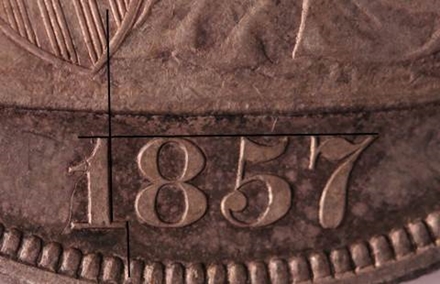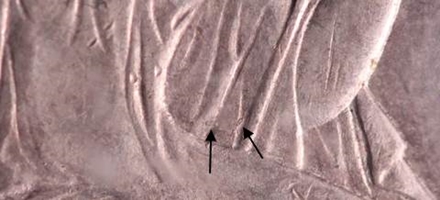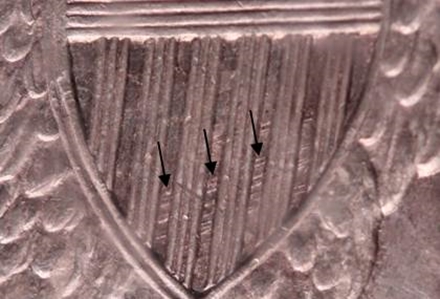|
|
Comments: This is the second and final use of Obverse P1. Obverse P1 was previously used to strike 1857 proofs. This is the only use of Reverse A. |
Obverse P1 The photo below shows the Obverse P1 attribution grid.  1857 Obverse P1 attribution grid The date position is similar to obverse 1. The differences are the lack of die lines under the toe and the presence of several lumps on the upper gown. The lumps are noted on the photo below.  1857 Obverse P1 lumps in gown
|
1857 Reverse A features heavy diagonal die lines in the lower shield recesses, shown in the photo below, that allow easy identification. Also, note that the surfaces between the leaves are completely finished on this die marriage, whereas they’re mostly unfinished on OC-2.  Reverse A die lines in shield
|
| Photo credits:
Obverse P1 and Reverse A: 1857 PCGS AU55, from the Osburn-Cushing reference collection. |
